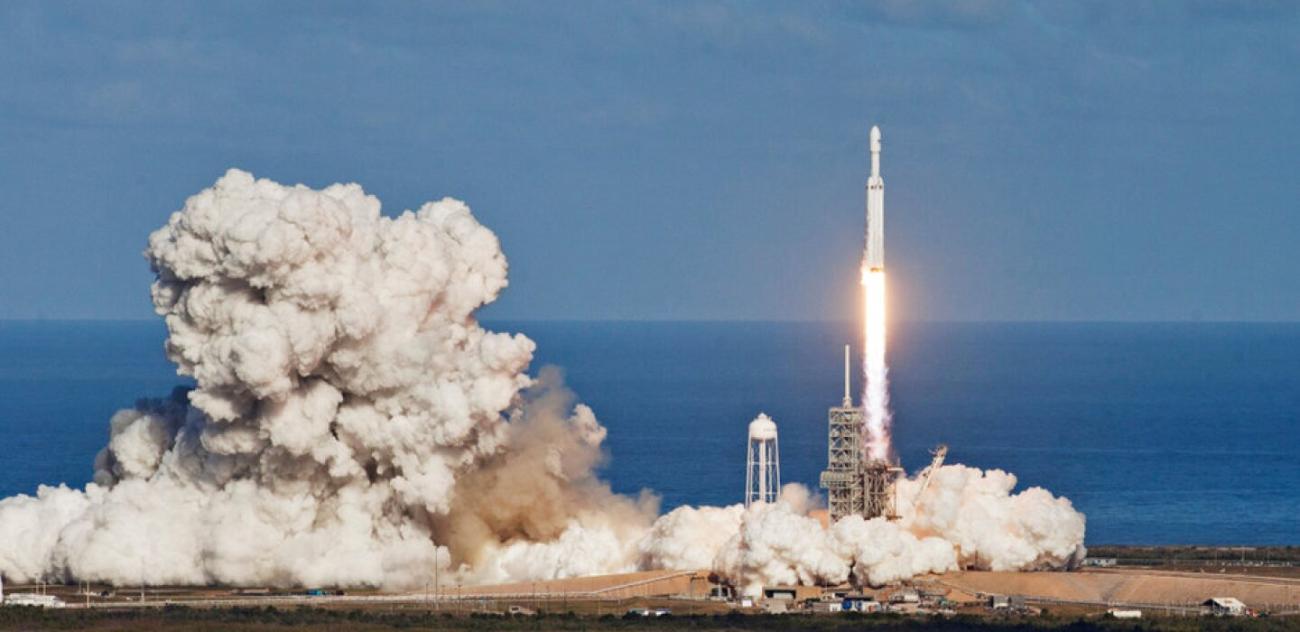
On April 17th, SpaceX seconds away from launching their Starship spacecraft and Super Heavy booster rocket, collectively referred to as Starship, when a frozen pressure valve stopped their plans.
According to the plan, the test flight would last 90 minutes and the spacecraft would reach an altitude of 150 miles above Earth's surface. And while Starship and Super Heavy are both designed to be fully reusable, this particular model was scheduled to splash into the Pacific Ocean after it completed its course.
They took another stab at it three days later, on April 20th. However, when the time for the take-off arrived, disaster followed almost immediately, with the rocket exploding four minutes after leaving the ground.
SpaceX also confirmed that there were multiple engine failures.
Super Heavy's role is to give the initial kick off the ground and then break away from the spacecraft after it uses all its fuel. Following booster separation, Starship would continue its journey with its own engines.
But the rocket failed to separate from the spacecraft and both vehicles exploded, thanks to their flight termination system, around 4 minutes after being in the air.
Unlike what usually happens when space shuttles explode, the failed launch was followed by applause, celebrations, and a congratulatory tweet to the SpaceX team from the company's CEO, Elon Musk. According to them, the glass is half full.
After all, Musk had stated he will consider it a win if the spacecraft clears the launch tower and doesn't blow up the launch mount. And it might not have been clear at the moment, but the Starship rocket did exactly that by turning the concrete launchpad into a crater.
Unfortunately, the damage done by this behemoth didn't stop at the pad and numerous experts and organisations have talked about the environmental damage caused by SpaceX.
The American Bird Conservancy stated that they are deeply concerned about the impacts on flora and fauna of the region, including “species listed under the Endangered Species Act (ESA), including the federally Threatened Piping Plover and Red Knot, and the Endangered Northern Aplomado Falcon."
Environmental compliance specialist Eric Roesch, said that this damage was preventable. According to him, Musk didn't invest in tried and tested launch infrastructure like a flame trench which diverts the flames away from the space vehicle. He believes that the reason for the lack of a better infrastructure lies behind the fact it wouldn't be convenient for the company.
And it looks like Mr. Roesch was right on the money.
Elon Musk admitted on his Twitter account that they started building a water-cooled steel plate to go under the pad 3 months ago, but it wasn't ready in time and they went on with the rocket launch without it.
Louis Balderas, the founder of LadPadre, a free live stream devoted to 24/7 coverage of the Starship construction and testing site in Boca Chica, said debris, smoke, and dust are a common occurrence in rocket launches, but the impact of the Starship liftoff wasn't like anything he had witnessed before.
"There were bowling ball-sized pieces of concrete that came flying out of the launchpad area," he added.
Justin LeClaire, a conservation biologist with the Coastal Bend Bays and Estuaries Program, found launched concrete just a few feet away from shorebird nests. The debris from the explosion affected around 300 acres in Boca Chica. He believes that no wildlife will stick around if SpaceX continues to run its tests at that location.
The Endangered Ocelot Wildcat is another species that is in danger of losing its natural habitat because of Elon Musk’s company, according to a lawsuit filed against the FAA by environmental groups and the Carrizo/Comecrudo Tribe of Texas.
The lawsuit alleges that the agency hastily gave the OK to SpaceX to go on with their rocket launch and failed to do the necessary due diligence to ensure that no harm would occur to the surrounding environment and its inhabitants.
Center for Biological Diversity senior attorney Jared Margolis stated that even if the launches don't end up exploding, their heat and light pose a danger to bird species that use the area for migratory routes.
“It’s vital that we protect life on Earth even as we look to the stars in this modern era of spaceflight,” said Mr. Margolis.
And while it might take a while for the FAA to figure out what went wrong, it's evident that numerous environmental specialists have issued a plethora of warnings about the risks, but no one with the power to prevent this disaster cared to listen.
Those who dislike Musk, believe that this is one of his many recent failures, associated with his fast and loose mindset and his disregard for potential consequences.
After all, how can Musk, and others like him, care about consequences when they never had to face any the same way we everyday, common folk do?
Content Disclaimer: The views & opinions expressed in this article are those of the author and do not necessarily reflect the views of VoiceBox, affiliates, and our partners. We are a nonpartisan platform amplifying youth voices on the topics they are passionate about.
Support Young Creators Like This One!
VoiceBox is a platform built to help young creators thrive. We believe that sharing thoughtful, high-quality content deserves pay even if your audience isn’t 100,000 strong.
But here's the thing: while you enjoy free content, our young contributors from all over the world are fairly compensated for their work. To keep this up, we need your help.
Will you join our community of supporters?
Your donation, no matter the size, makes a real difference. It allows us to:
- Compensate young creators for their work
- Maintain a safe, ad-free environment
- Continue providing high-quality, free content, including research reports and insights into youth issues
- Highlight youth voices and unique perspectives from cultures around the world
Your generosity fuels our mission! By supporting VoiceBox, you are directly supporting young people and showing that you value what they have to say.





